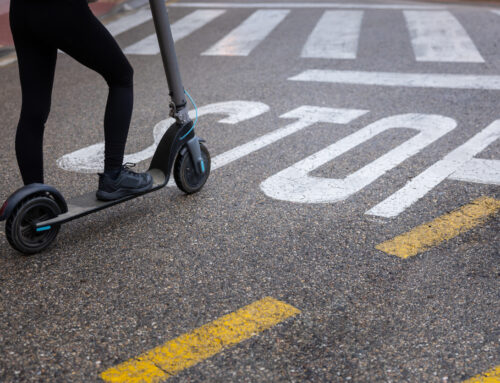How Many Teens Drink Alcohol?

Nationwide, statistics show underage drinking is on the decline as parents, educators, and policymakers keep finding new effective ways to address the issue. This is great news, but teens will always be exposed to alcohol by friends and other peers and in music, social media, popular shows, and other outlets. We as adults need to keep talking to them about the dangers of underage drinking because they’re seeing it online and from their friends.
In fact, 67% of North Carolina middle and high school students know students who have tried alcohol, according to Talk it Out NC’s recent State of Underage Drinking report. In addition, about a third of students think it’s okay to drink alcohol.
So, how many teens are drinking alcohol? What are the ages/milestones when kids start to drink, and how does it change as they get older?
Alcohol Use in Teens
Understanding how many teens drink alcohol is crucial for developing strategies to curb underage drinking and promote healthier choices. Alcohol use among teenagers can be influenced by a variety of factors, including peer pressure, family dynamics, and societal attitudes toward drinking.
Underage Drinking: A National Look
According to a recent CDC Youth Risk Behavior Survey, alcohol is the most commonly misused substance among young people in the United State. However, the number of teens who drink alcohol underage has dramatically declined in recent years. In 2021, 22.7% of U.S. teens reported they currently drink alcohol, compared to around 50% in the early to late 1990s.
Underage Drinking: A Look at Home
Let’s compare nationwide statistics to North Carolina in the CDC survey:
- Compared to the rest of the U.S., North Carolina has a slightly lower rate of teens who are currently drinking alcohol (19.4% vs 22.7%), according to the YRBS.
- The survey shows North Carolina is also slightly below the national average for teens who are currently binge drinking (9.9% vs 10.5%).
Reasons Teens Drink Alcohol & Dangerous Trends
Before we get into teenage alcohol trends, let’s look at some common reasons why teens may turn to alcohol:
- To cope with stress or underlying issues
- Peer pressure and trying to fit in
- Social media, movies, TV, and other media portrayals of alcohol
- Curiosity/experimentation
- Lack of guidance or boundaries from adult figures
Talking to teens about their feelings and the reasons why they may want to drink alcohol is a positive first step to helping them understand why underage drinking is not the answer to their problems. During these conversations, it’s also important to discuss dangerous drinking trends they should be aware of and avoid:
- Borgs: Borgs, or Black Out Rage Gallons, are a growing trend for underage and college drinkers. Adolescents will use gallon jugs to mix water, hard alcohol of their choice, and a flavor or electrolyte mix. While some champion it as a way to avoid risky party drinks, it’s really another way to binge drink.
- Drinking challenges: Always on the cutting edge of “what’s new,” social media offers no shortage of dangerous drinking challenges. The goal is to get young people to consume as much alcohol as they can as quickly as possible.
- More girls trying alcohol: Data shows more teenage girls are consuming alcohol than their male peers (16.6% vs. 14%).
How Ages and Milestones Impact Teen Drinking
As children grow up, their exposure to media, peer pressure, and opportunity increases. From the first day of middle or high school to getting a driver’s license or heading off to college, big milestones in a teen’s life often coincide with increased exposure to alcohol misuse. Our research shows the majority of teenagers try alcohol before the age of 14, with the likelihood of trying alcohol increasing as they grow older.
It’s vital to have frequent and evolving conversations with teens about alcohol and underage drinking. Your conversations and attitudes about alcohol can grow with your child. See how to Continue the Conversation for helpful resources.
The Role of Parents and the Community
It’s no surprise that teen drinking is on the decline. Parents and the community around adolescents have greatly helped shape a healthier future for youth. Talk it Out NC’s State of Underage Drinking report shows 93% of students feel that talking to their parents about underage drinking could help prevent it.
Parents play a pivotal role in shaping their children’s attitudes and behaviors toward alcohol. Open communication, setting clear expectations, and modeling responsible behavior can all help steer teens away from underage drinking.
Communities can support these efforts by providing safe, engaging alternatives to alcohol-related activities and ensuring that teens have access to positive role models and mentors.
Start the Conversation With Talk it Out NC
By working together, families, schools, and communities can continue to help lower the number of North Carolina teens who drink alcohol and guide them to make healthy choices. The best way to do this is to have open, honest conversations about alcohol, the dangers it presents to teens, and why it’s important to wait until 21 to drink.
We here at Talk it Out NC have resources, tips, and tools designed to foster meaningful conversations and encourage a culture of awareness and responsibility around alcohol and preventing underage drinking.
Ready to make a difference? Start the Conversation about underage drinking today.



